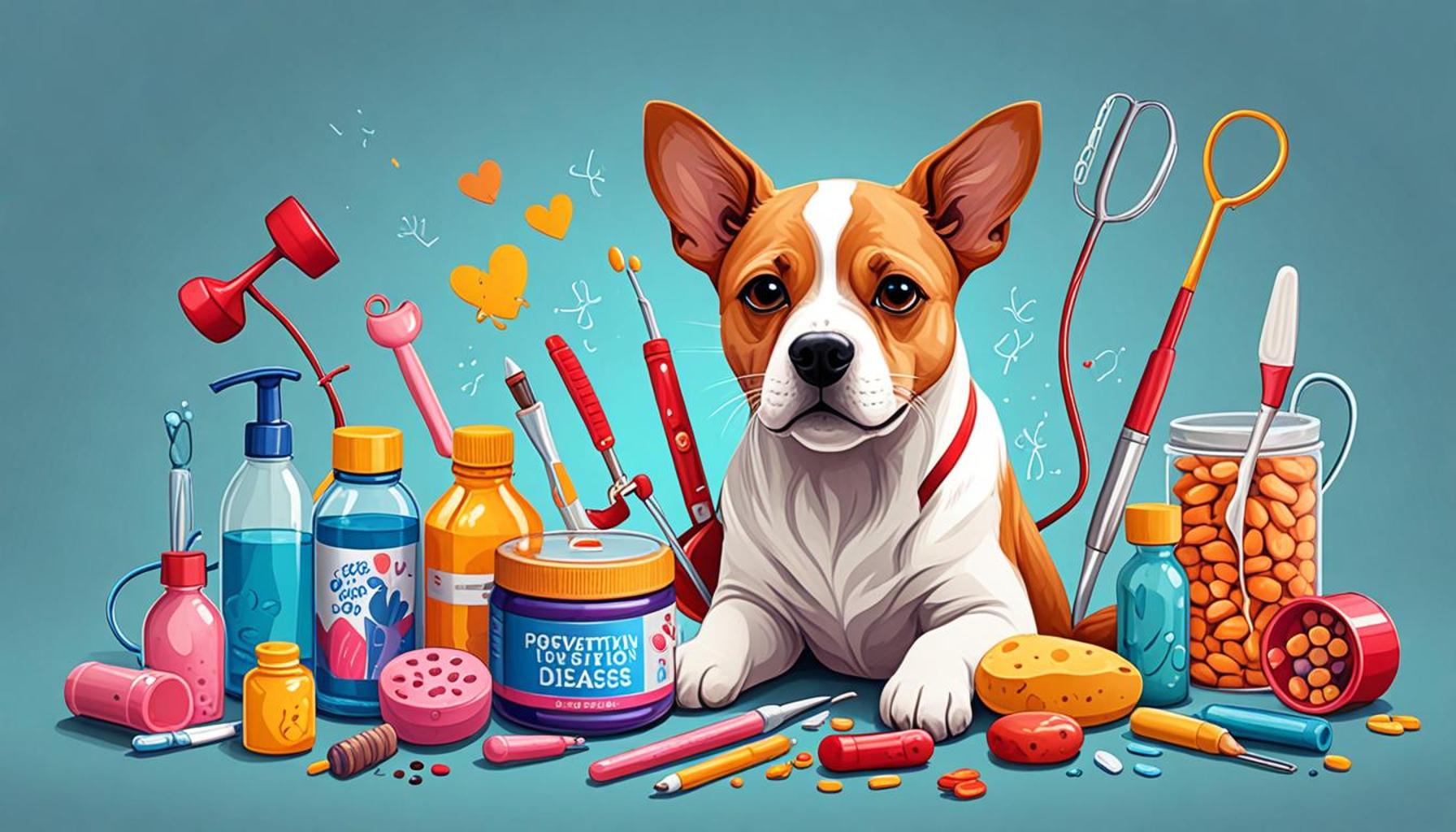How to Identify Food Allergies in Pets

Identifying and Managing Food Allergies in Pets
As responsible pet owners, our primary goal is to ensure our furry companions lead happy and healthy lives. However, one aspect that often goes unnoticed is the presence of food allergies, which can result in significant discomfort and various health complications. Recognizing and addressing these allergies is crucial for enhancing our pets’ quality of life.
Common signs of food allergies are often subtle but can manifest in various ways. The following are primary indicators that your pet might be suffering from a food allergy:
- Itchy skin or paws: Frequent scratching or biting at the skin, ears, or paws can indicate allergies, as pets try to soothe irritated skin.
- Frequent ear infections: Pets suffering from food allergies may develop recurrent ear infections, which manifest as redness, discharge, or foul odor.
- Gastrointestinal issues: Symptoms such as vomiting, diarrhea, or excessive gas can also point toward food sensitivities.
It’s important to recognize that food allergies can develop at any age. Even if your pet has been eating the same food for years, sensitivities can arise unexpectedly. Some common allergens found in pet food include:
- Beef: A frequent protein source in both premium and generic dog food, beef allergies are one of the more common food sensitivities seen in pets.
- Dairy: Many pets lack the enzyme required to digest dairy products, leading to gastrointestinal problems and other allergic reactions.
- Chicken: Another prevalent source of protein, chicken can provoke allergic reactions in some dogs and cats.
- Grains: Ingredients like wheat have become controversial in pet diets, as grains can trigger allergic responses in sensitive animals.
Many pet owners often misread symptoms, attributing them to seasonal allergies, anxiety, or even aging. However, early detection of food allergies is vital to manage discomfort and prevent further health complications. The implications of ignoring these signs can lead to chronic skin conditions, persistent infections, and a decline in overall health.
Taking a proactive approach is essential. Start by monitoring your pet’s behavior and health after meals. If you notice any troubling symptoms, it is crucial to consult your veterinarian. They may recommend testing for food allergies or suggest a specialized elimination diet to determine potential triggers. Working together, you can find the right dietary adjustments that will enhance your pet’s well-being and keep them happy for years to come.

DISCOVER MORE: Click here to learn about your pet’s nutrition
Understanding Your Pet’s Symptoms
In the quest to identify food allergies in your pets, being observant and informed can greatly enhance your ability to spot potential triggers. Since our furry friends cannot communicate their discomfort in words, it’s essential to take note of their behavior and physical signs closely. Here are several actionable steps to help you analyze your pet’s symptoms and recognize potential food allergies.
1. Keep a Detailed Log
Documentation can be your best ally in pinpointing food allergies. Maintaining a detailed log of your pet’s diet, behaviors, and symptoms can reveal patterns over time. Track the following:
- Dietary Changes: Note any new foods introduced into your pet’s diet, including treats and snacks.
- Symptoms Encountered: Record when symptoms appear, such as itching, gastrointestinal upset, or infections, to see if they correlate with specific meals.
- Environmental Factors: Consider if there are changes in the environment that may exacerbate symptoms, such as seasonal pollen or new cleaning products.
Such observations may lead to a more accurate identification of any food-related issues, enabling you to communicate effectively with your veterinarian.
2. Conduct a Process of Elimination
If your pet exhibits signs of food allergies, an elimination diet can be a useful approach for identifying allergens. This diet involves feeding your pet a simple diet consisting of a limited number of ingredients—ideally, a protein and carbohydrate your pet has never consumed before. During this trial period, monitor your pet for improvement over several weeks.
- Choosing Protein: Opt for novel protein sources such as lamb, venison, or duck to see if your pet’s symptoms improve.
- Carbohydrate Sources: Use grains like brown rice or legumes that haven’t been part of their regular diet.
- Duration: Continue the elimination diet for a minimum of 8 to 12 weeks, as it can take time for allergens to clear from your pet’s system.
After the trial period, slowly reintroduce previous ingredients one at a time. This process will help pinpoint which foods may be causing your pet’s issues. If a specific ingredient leads to a resurgence of symptoms, that’s a strong indicator of an allergy.
3. Consult Your Veterinarian
While you can take preliminary steps at home, consulting a veterinarian is essential for a comprehensive assessment. Your veterinarian can conduct allergy testing that can reveal sensitivities to various ingredients. Additionally, they may recommend special veterinary diets specifically formulated for pets with allergies or direct you toward reputable brands that provide allergy-friendly products.
Taking a proactive approach will contribute significantly to your pet’s happiness and health, improving their quality of life. Remember, understanding food allergies in pets involves both attentiveness and collaboration with your veterinarian to achieve the best results.
How to Identify Food Allergies in Pets
Understanding how to identify food allergies in pets can be a crucial aspect of pet ownership. Many pet owners might overlook the subtle clues that indicate their pet might be allergic to certain foods. Recognizing these signs early can help in managing their discomfort and improving their overall well-being. One effective method to determine food allergies is through an elimination diet.
The elimination diet involves removing common allergens from your pet’s diet and slowly reintroducing them one by one while monitoring for adverse reactions. Common allergens include beef, dairy, chicken, wheat, and fish. During this process, it is essential to keep a detailed record of your pet’s diet and symptoms, making it easier to pinpoint which food might be causing the allergic reaction.
Another important step is to consult a veterinarian who can provide professional advice and recommend allergy testing. This testing may include intradermal skin tests or blood screens, which can help identify specific allergens more accurately.
In addition to dietary changes, keep an eye on your pet’s environment. Sometimes, food allergies can be exacerbated by environmental factors such as pollen, mold, or dust mites. Maintaining a clean environment and limiting exposure to known allergens can further aid in determining the cause of your pet’s discomfort.
| Category 1 | Category 2 |
|---|---|
| Identification Methods | Elimination diets and food trials help pinpoint allergens. |
| Medical Consultation | Veterinarians can provide testing and tailored advice based on symptoms. |
Through careful observation and proactive measures, you can significantly enhance your pet’s quality of life. Understanding food allergies not only fosters a healthier relationship between you and your pet but also enables you to make informed dietary and lifestyle choices for their well-being.
LEARN MORE: Click here for insights on balanced nutrition
Recognizing Key Symptoms and Health Indicators
Once you start observing your pet’s behaviors and dietary patterns, the next step is to familiarize yourself with the key symptoms that might indicate food allergies. These symptoms can vary significantly between animals and can sometimes mimic other health issues, making it critical to approach this with a keen eye and adequate knowledge.
1. Common Allergic Reactions
Many pets will exhibit classic signs of allergies which can be categorized into two main groups: dermatological symptoms and gastrointestinal disturbances. Understanding these symptoms is essential in identifying food allergies.
- Dermatological Symptoms: Look for excessive scratching, licking, or biting at the skin, which may lead to secondary infections. Red, inflamed, or flaky skin could also suggest an allergic reaction. In some cases, you might see hair loss or develop hot spots—areas of skin that become inflamed and infected.
- Gastrointestinal Disturbances: Vomiting, diarrhea, or excessive gas can be telltale signs of food allergies. Keep in mind that food allergies can also manifest as chronic conditions like irritable bowel syndrome, which often necessitates veterinary diagnosis.
2. Use Veterinary Allergy Tests
If you suspect food allergies based on your observations, it may be time to discuss allergy testing with your veterinarian. There are two primary methods of testing: blood tests and skin tests. Each has its pros and cons.
- Blood Tests: These tests check for antibodies to specific allergens in your pet’s bloodstream. They can be less invasive but may not always reveal all allergies.
- Skin Tests: Similar to tests done on humans, your veterinarian will expose your pet’s skin to various allergens and monitor for any reactions. These tests can provide immediate results, helping to address your pet’s needs faster.
Another crucial aspect is diagnosing cross-reactivity, whereby your pet may react to other ingredients closely related to known allergens. This information is pivotal in customizing an effective dietary plan for your pet.
3. Understanding the Role of Nutritional Supplements
As part of managing food allergies, incorporating nutritional supplements may help alleviate some symptoms while promoting overall health. Fatty acids, such as Omega-3, have been noted for their anti-inflammatory properties, which can improve skin health for allergic pets. Always consult your veterinarian before introducing new supplements, as they can provide tailored recommendations based on individual needs.
4. Explore Alternative Diets
Aside from starting an elimination diet, exploring hypoallergenic and limited ingredient diets may offer further insights. The market is now bursting with options specifically designed for pets with food sensitivities. Research reputable brands that focus on high-quality ingredients with fewer additives. Additionally, some pet owners have successfully incorporated homemade diets, ensuring complete control over ingredients while monitoring their pet’s reactions closely.
Incorporating these strategies into your routine will substantially support your journey in identifying food allergies in pets. By staying vigilant, keeping detailed records, and seeking professional guidance when necessary, you can significantly improve your pet’s wellbeing and reduce any discomfort associated with dietary sensitivities.
DISCOVER MORE: Click here to learn about how stress affects your cat
Conclusion: Enhancing Your Pet’s Quality of Life through Allergy Awareness
Understanding how to identify food allergies in pets is a crucial step for any dedicated pet owner. From the symptoms of dermatological reactions to gastrointestinal disturbances, your observations set the foundation for addressing food sensitivities. It’s important to recognize that while some signs may seem trivial, they could indicate a more significant underlying issue. Engaging with veterinary professionals for allergy testing can provide clarity and direction for treatment.
Additionally, monitoring your pet’s dietary habits and considering nutritional supplements can aid in mitigating symptoms and boosting overall health. Exploring options like hypoallergenic and limited ingredient diets also plays a pivotal role in accommodating dietary restrictions while offering nutritionally balanced meals. This proactive approach can not only alleviate discomfort but also improve the general quality of life for your furry companion.
In conclusion, the journey to effectively manage food allergies in pets requires vigilance, patience, and a willingness to adapt. This holistic approach not only enhances your understanding of your pet’s unique needs but also reinforces the bond you share. Equip yourself with knowledge, be attentive, and don’t hesitate to reach out for professional advice. After all, a healthy pet is a happy pet, and your commitment to their wellbeing will shine through in their playful antics and affectionate companionship.


